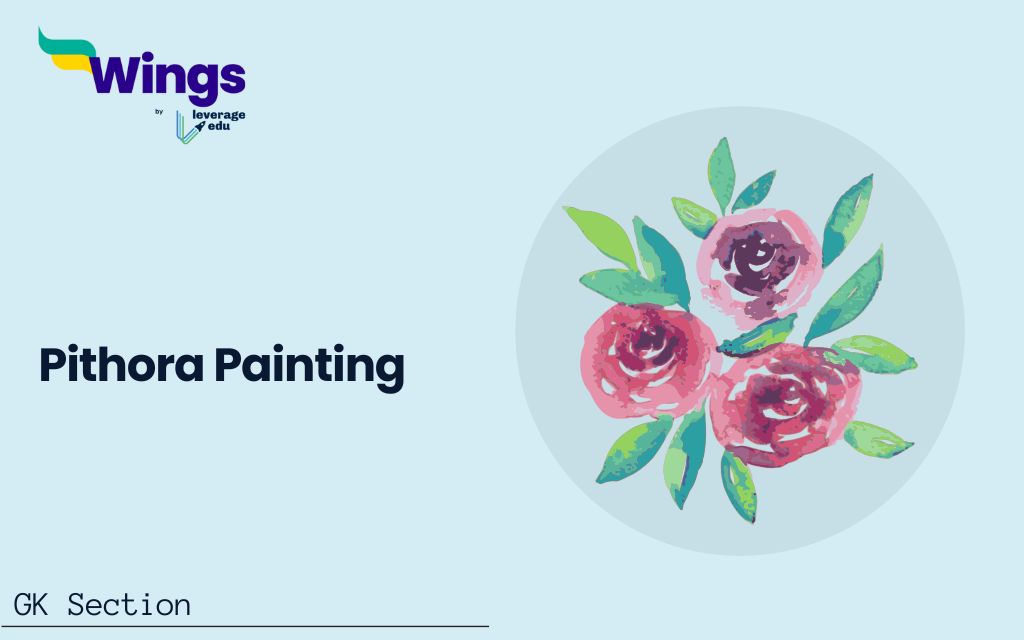Pithora Painting is an Indian tribal painting created by the Rathwas, Bhilals, Nayaks, and Tadi tribes. This tribe lives in and around Chota Udaipur, Kawat, Eastern Gujarat, and Western Madhya Pradesh. This is a ritualistic art form that holds great cultural and spiritual significance for these communities. In this section, we will discuss Pithora Painting, which is a vital aspect of Art and Culture for the UPSC examination.
Contents
Pithora Painting:Historical Background
This painting is highly valued in the tribal culture. It is also significant in terms of history and culture.
- Pithora painting is deeply rooted in the culture of the Rathwa and Bhilala tribes.
- This painting is thought to have begun hundreds of years ago and was used to communicate with deities and ancestor spirits.
- This is not just a painting, but a ritualistic ceremony honouring major occasions such as weddings and celebrations.
- These paintings are thought to be a way of attracting the blessings of Pithora Baba and other deities.
Pithora Painting:Key Features
Pithora Painting is more than just an art form; it is a cultural tradition for the Rathwa and Bhilala tribes. Pithora’s painting communicates the rich cultural and traditional legacy of these people with its brilliant colours and precise design. It ensures that their traditions are celebrated and passed along to future generations.There are some of the key features of Pithora Painting as follows:
- Pithora Painting uses bright and bold colours, resulting in a visually appealing appearance.
- The painting is notable for its detailed pattern work, with each theme and figure accurately drawn.
- This picture is rich in storytelling and has a more narrative tone.
Pithora Painting:Themes and Subjects
This painting follows specific themes or subjects that are considered as a ritualistic ceremony.
- Pithora paintings represent Pithora Baba and other deities such as gods and goddesses, ancestors, and heavenly creatures.
- This painting primarily depicts natural aspects such as animals, birds, plants, and more.
- It depicts nature’s connection to the community and its individuals.
- Common scenes in this painting include agricultural activity, festivals, and dancing.
Also Read: Drama and Art in Education
Pithora Painting:Techniques
There are certain materials or techniques used in the painting, such as brushes, colours and other tools.
- Originally, pithora paintings were painted on the walls of village homes.
- A smooth surface is created by applying a mixture of cow dung, mud, and water.
- The colours used in this painting were obtained from natural sources. For example, white comes from rice paste, black from soot, red from red ochre, green from leaves, yellow from turmeric, and blue from indigo.
- Brushes are primarily created from twigs and clothing. These simple tools are used to create complex patterns.
Pithora Painting:Artistic Composition
The style and composition of the Pithora Painting follow symbolism and symmetrical order.
- Pithora Paintings are characterised by their vibrant colours and detailed patterns.
- Horses, elephants, peacocks, and humans are among the most common themes, representing many aspects of life and spirituality. For example, horses represent strength and prosperity.
- The designs are often organised and symmetrical.
- The figures are arranged in rows or circular patterns. This layout reflects the community’s values of harmony and balance.
Also Read: Traditional Art Forms of India: Folk Art
Pithora Painting:Ritualistic Process
This painting is highly significant for the community as it is a part of the ritualistic ceremony.
- Pithora painting is mainly commissioned by families to seek blessings, which is why it is also seen as part of the ritualistic ceremonies. It also includes prayers and offerings.
- The artist who designed this painting is known as ‘Lakhara’. The artist works collaboratively and cooperatively with family members or communities who assist in the creation of the artwork.
- Following the completion of the painting, a ceremonial celebration with prayer offerings is organised.
- This is a community gathering with a shared cultural identity.
Pithora Painting: Preservation
Pithora Painting has relevance in the modern world, which makes its preservation more crucial.
- Traditional Pithora Painting is done on the walls, while modern paintings are done on canvas or paper.
- This adaption has helped to preserve this art form while also giving business opportunities for the artists.
- Cultural organisations and the government have worked to preserve and promote Pithora Painting as part of India’s intangible cultural heritage.
- The government and numerous organisations have undertaken a variety of efforts, including workshops, exhibitions, and documentation projects.
FAQs
Pithora Painting is an Indian tribal painting created by the Rathwas, Bhilals, Nayaks, and Tadi tribes. This tribe lives in and around Chota Udaipur, Kawat, Eastern Gujarat, and Western Madhya Pradesh. This is a ritualistic art form that holds great cultural and spiritual significance for these communities.
Pithora paintings represent Pithora Baba and other deities such as gods and goddesses, ancestors, and heavenly creatures. This painting primarily depicts natural aspects such as animals, birds, plants, and more. It depicts nature’s connection to the community and its individuals. Common scenes include agricultural activity, festivals, and dancing.
The pithora painting is dedicated to Baba Pithora, the tribal god. Aside from him, other local deities are also honoured because this painting is associated with diverse religious and mythical significance.
RELATED POSTS
| Arts of the Mauryan Period | History of Indian Art |
| Mysore Painting: History, Technique and Motifs | Top 10 Famous Paintings of India |
| Hindustani And Carnatic Music | Abstract Art |
| Arts of the Indus Valley | Tribal Paintings of India |
This was all about the “Pithora Painting”. For more such informative blogs, check out our UPSCExams Section and Study Material Section, or you can learn more about us by visiting our Indian exams page.
 One app for all your study abroad needs
One app for all your study abroad needs














